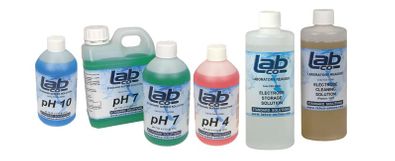pH Electrode Cleaning Guide
|
In order to maintain accuracy and prolong the life of your pH electrode, it’s essential that cleaning is a regular part of your routine! We’ve got a quick cleaning guide to help you with the process. Rinse with Distilled Water
Soak in Electrode Cleaning Solution
Rinse again in Distilled Water Store in Electrode Storage Solution
Electrode storage solutions and electrode cleaning solutions are typically made from pH buffer solutions with added preservatives to inhibit microbial growth and ensure long-term stability.
Why does the end of the electrode have to be wet? Keeping the tip of the pH probe wet is essential because it maintains the hydrated state of the sensitive glass membrane. The hydrated membrane allows for efficient ion exchange between the sample and the electrode, ensuring accurate pH measurements. If the tip of the electrode dries out, the glass membrane can become damaged, leading to a slower response time, inaccurate readings, or even permanent damage to the electrode.
|
|


